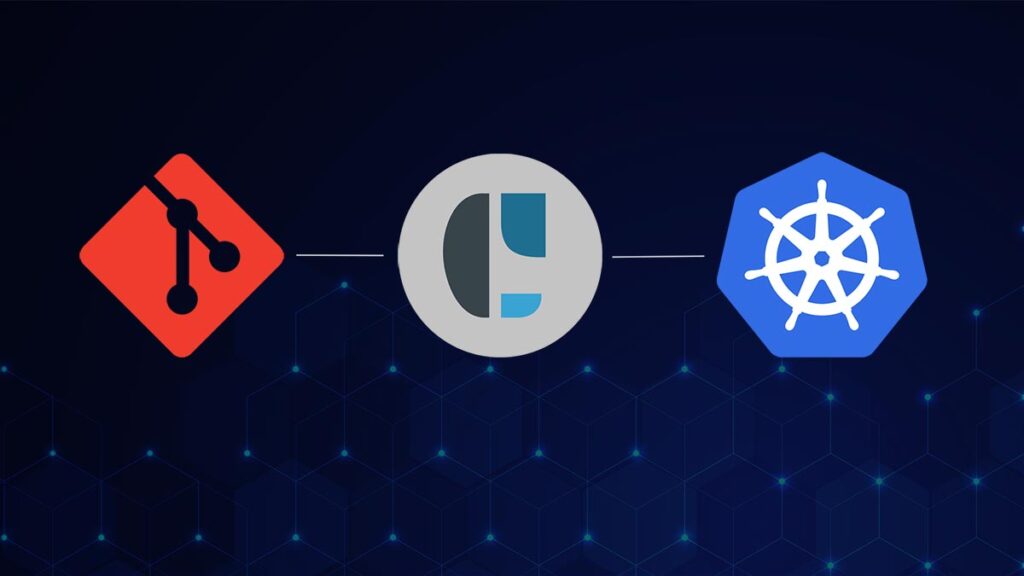
GitHub Actions has emerged as a popular CI/CD tool due to its ease-of-use, seamless integration with GitHub repositories, and flexibility in automating various development tasks. However, when it comes to large-scale Kubernetes-based application deployments, complexities and nuances can often pose challenges for DevOps teams.
In this article, we will explore how integrating CAEPE with GitHub Actions can streamline enterprise Kubernetes application deployments, providing a powerful combination of automation and progressive delivery strategies.
Understanding GitHub Actions
GitHub Actions is a versatile CI/CD platform provided by GitHub for streamlining development processes. It empowers developers to automate tasks such as building, testing, and deploying, thereby enhancing development efficiency. Custom workflows are easily set up using YAML files, allowing for the automation of various tasks.
GitHub Actions’ seamless integration with GitHub repositories, coupled with its extensive marketplace of pre-built actions, makes it a powerful tool for streamlining development workflows. Detailed logs and insights provided by GitHub Actions help identify and resolve issues quickly during workflow runs.

GitHub Actions serves multiple purposes, including:
GitHub Actions can also be used for deploying applications to production or staging environments post-testing. However, if you are carrying out larger or more complex deployments with GitHub Actions, keep in mind the following:
Execution time
GitHub Actions has specific time limits for workflows, with a maximum execution time of 6 hours for public repositories and 72 hours for private repositories.
This can be challenging for large or complex deployments that require more time.
Resource limitations
Actions running on GitHub’s servers are subject to resource constraints such as CPU, memory, and disk space availability.
This can potentially affect the performance and speed of deployments, especially for resource-intensive applications.
Environmental Constraints
GitHub Actions run on virtual environments that may not perfectly match the production environment.
This can lead to unexpected behavior or differences between test and production environments.
Introducing CAEPE
CAEPE is a Kubernetes-native CD platform designed to simplify and enhance application deployments across different distributions, platforms, and environments. It supports various deployment targets, including on-premise, cloud, hybrid setups, as well as edge and airgapped situations. CAEPE automates progressive delivery deployment tasks and workflows, catering to both basic and advanced users’ needs.

CAEPE offers several key features and use cases, including:
The CI/CD process becomes more efficient and streamlined with CAEPE’s seamless integration with GitHub Actions. While GitHub Actions handles version control, code building, testing, and artifacts registry, CAEPE focuses on app deployment coordination and management. This combination ensures smooth and hassle-free deployments by efficiently managing release deployment across various environments.
Turbocharging GitHub Actions with CAEPE

CAEPE brings several advantages to the GitHub Actions workflow, turbocharging the CI/CD pipeline. As depicted in the diagram, GitHub Actions takes the lead in overseeing the CI process, handling version control, code building, testing, and artifacts registry. CAEPE focuses on CD process, app deployment coordination and management. It efficiently manages release deployment across various environments. With CAEPE, moving releases between environments becomes a breeze, ensuring smooth and hassle-free deployments.
Let’s explore some of the key benefits:
Deploy Anywhere
Large-scale applications often need to be deployed across different environments, each with its own requirements.
CAEPE is designed to handle deployments anywhere, whether it’s on-premise, in the cloud, or a hybrid setup. It supports managed services, native Kubernetes, on-premises, as well as edge and airgapped deployment targets. This flexibility ensures that applications can be shipped to any environment seamlessly.
Confident Delivery
Confidence is crucial in the software development lifecycle, and CAEPE’s ‘Confident Delivery’ pillar ensures just that. By embracing both ‘Shift Left’ and ‘Shift Right’ testing approaches, CAEPE facilitates best practice tests to identify bugs and potential risks early on. ‘Shift Left’ testing involves rapid, automated, and iterative tests at crucial stages of development, while ‘Shift Right’ entails comprehensive monitoring of application behaviour, performance, and resilience. This comprehensive approach leaves no room for uncertainty, ensuring the success of your application.
Progressive Delivery Strategies
Kubernetes offers various deployment options, such as Blue-Green, Recreate/Highlander, Rolling/Ramped, A/B, and Canary deployments. However, effectively executing these strategies requires expert knowledge.
CAEPE simplifies this process by providing out-of-the-box support for progressive delivery strategies. Whether you prefer an intuitive UI or command-line and scripting options, CAEPE equips you with the tools to make deployment much easier.
Conclusion
Integrating CAEPE with GitHub Actions can significantly enhance the CI/CD pipeline for enterprise Kubernetes application deployments. With CAEPE’s progressive delivery strategies, confident delivery approach, and ability to deploy applications anywhere, teams can streamline their development workflows and ensure smooth and hassle-free deployments. By leveraging the power of these two tools, DevOps teams can turbocharge their CI/CD pipeline and achieve faster and more reliable application deployments.
Check out Part 2 of our article, where we will walk through how to set up CAEPE with GitHub Actions.


